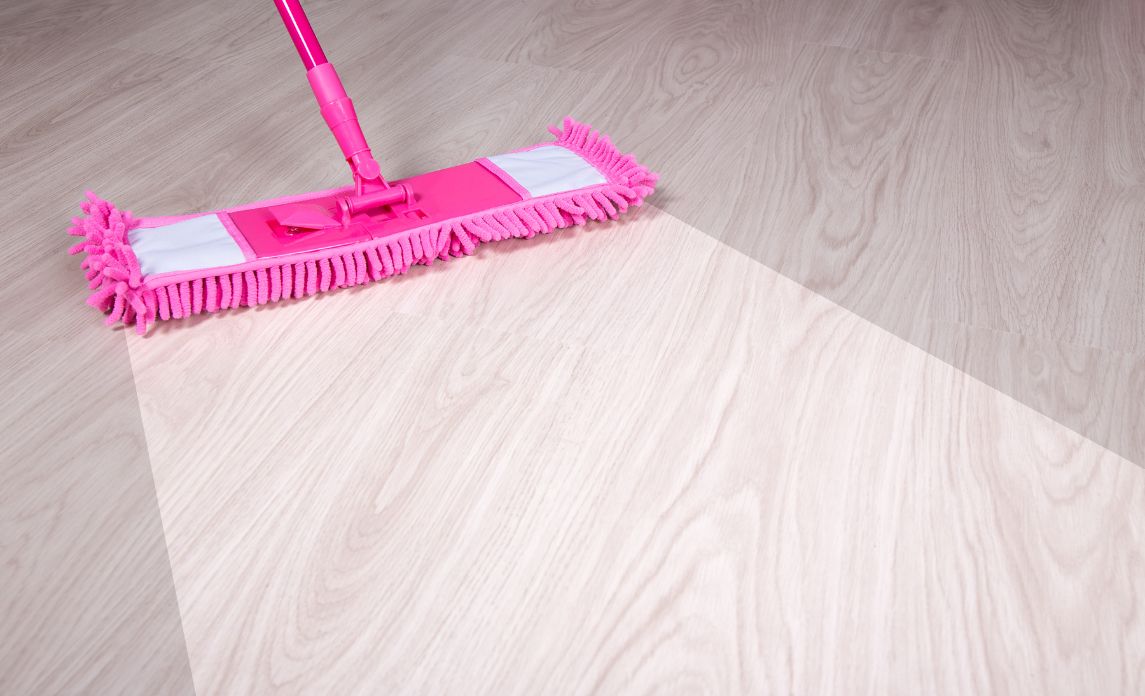Among the dirtiest and probably the most abused parts of any building are the floors. For one, both humans and pets can bring in all sorts of debris—like dust, mud, sand, pebbles, and even snow—with their shoes and paws. There’s also the occasional food and beverage spills, not to mention a build-up of cleaning products after a while.
Without proper care, your floors will get damaged and negatively impact not just your comfort within the space, but also your property’s value. If you’re running a business, unmaintained floors can give customers a bad impression.
Fortunately, it’s pretty simple to keep your floors in good shape for years. The key is to know what kinds of cleaning methods suit different types of materials. Here’s a quick guide to some of the most common types of floors and how to clean them:
Hardwood Floors
Whether they’re made from ash, beech, cherry, maple, oak, teak, or walnut, hardwood floors definitely have a timeless aesthetic. They’re also available in different styles, like solid planks, parquet, and tiles.
What’s more, because of the nature of the material, hardwood floors are made to last for decades. That is, if you can care for them properly. Some of the things you can do to keep your hardwood floors in good shape include:
- vacuuming or sweeping often to prevent dust buildup that causes dullness
- using a doormat to minimise the amount of debris brought in by shoes
- wiping up spills ASAP to prevent marks
- putting felt pads on the feet of furniture to prevent scratches
If your hardwood floors are made from wood planks, they’re likely treated with a layer of oil or lacquer to seal it and make it less porous. In this case, you need to use pH-neutral cleaners to keep the sealant intact. Avoid acidic and abrasive cleaners at all costs!
Every 2 to 4 months, have professional floor cleaners polish your hardwood floors to give it some extra shine. Then, about every 7 to 10 years, have them refinished and sanded to maintain their quality.
Tile Floors
A lot of homes and workplaces have tile floors due to their practicality. Aside from being more affordable than wood or stone, they’re also quite stylish and durable. In particular, tile floors are great for places with high humidity. Some of the best places to use tile is in the kitchen and bathroom, but they can definitely be installed in any room of the home or office.
To keep tile floors in good shape, get in the habit of vacuuming or sweeping it regularly to remove dust. In case you find any stains, use a mild detergent or the appropriate floor cleaner. Make sure to only use the recommended amount, so there won’t be any residues left behind after rinsing.
For grout maintenance, you can use a paste made from baking soda and water for scrubbing. Use an old toothbrush for application so you can be more precise. Then, after rinsing and drying, you can apply a grout sealer to prevent stains for longer.
Stone Floors
There are different kinds of natural stones that can be used for flooring, granite, limestone, marble, and slate among them. They can be used both indoor or outdoor, but they do require some extra care to maintain their quality.
First, just like hardwood and tiles, make sure to sweep your stone floors to remove the dust. You can wet mop stone floors if you want, but make sure to avoid acidic or abrasive cleaners. It’s also not advisable to wax stone floors, because this will actually cause the stone to look dull.
For porous stones like marble, make sure to clean up liquid spills right away. If you let them sit for long, the liquid might seep into the microscopic pores in the stone. It won’t make your floors less durable, but it will cause a stain.
That being said, there are plenty of stain removers for stone floors. Use a suitable product and avoid being too harsh when rubbing. Finally, after about every 4 years, have your stone floors resealed to prolong their lifespan.
Laminate Floors
Hardwood floors look great, but they are quite pricey. If you want something that looks that same but doesn’t cost as much, you can look into getting laminate floors. These are made using various synthetic materials, which are laminated together and topped off with an applique to look like wood. Then, it’s given a final top coat to protect the entire material.
This means that wet mops and steam cleaners are a no-no for laminate floors, as this will destroy the sealant. Instead, you should use a dry mop or a soft-bristled broom to remove dust and dirt. For stubborn grime, use a product suitable to laminate flooring and follow the instructions closely to avoid damage.
Carpet Floors
Finally, for carpets and carpet floors, vacuuming is the way to go for regular maintenance. If you can, vacuum at least twice a week so the dust doesn’t have time to settle into the carpet fibres.
In case something spills on the carpet, blot it out immediately using some paper towels or a soft cotton cloth. Try to absorb as much of the spill as possible, before using your preferred brand of carpet cleaner; you can also use mild detergent. Then, use more paper towels or a wet vacuum to dry the carpet.
For deep-cleaning, the ideal schedule is about two to three times a year depending on foot traffic. It’s best to have professional cleaners do this task, as they’re better equipped to handle this job. There’s also less risk of damaging your carpet.
Keeping your property’s floors clean is integral to ensuring its longevity. Follow the recommendations above for your own floors at home or at work to keep them looking like new and for years to come.


